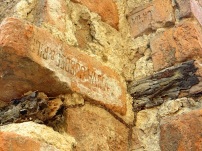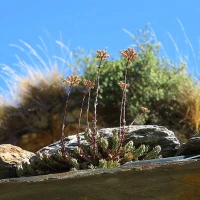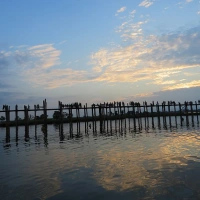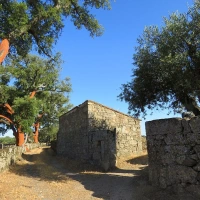Rio in a Nutshell
I am not a city girl, despite living in a city, and although I thoroughly immerse myself in the joys of city living, I much prefer quiet, open spaces, where nature sounds abound. Yet, I almost instantly fell head-over-heels in love with Rio de Janeiro, and despite spending three weeks discovering this enigmatic city, I left, longing for more. It feels to me as if I’ve hardly scratched the surface of this richly layered city, which is indeed Cidade Maravilhosa or the Wonderful City.
Here is a glimpse of some of the best things to see or do in Rio.
1. Christ the Redeemer (Cristo Rendentor)
The first tram (BR 74 per person, return) leaves at 8 am, and if you, like me, are averse to crowds, being first on the mountain will reward you with breathing space for a short while, and photographs without the bobbing heads of strangers in them.
The views from the top of the 710 m high Corcovado Mountain is simply put, breathtaking, and should not be missed.
Even when going early, the area at the foot of the statue is small, and will soon fill up with jostling bodies. Get away from the crunch by visiting the small chapel at the back, inside the base, of the statue.
At the foot of the mountain, just around the corner from the tram station, past a big bus stop, you will find the charmingly, quiet square of Largo do Boticario. It hints at the grandeur of yesteryear, and with its colourful, but peeling paint, conjures up romantic notions that has nothing to do with the lives or struggles of the people who live there these days.
2. Sugar Loaf Mountain (Pão de Açúcar) and Urca
Iconic and enduring, Sugar Loaf Mountain has been painted, sketched, and photographed by travelers ever since Rio was founded. One can walk up the first hill, Morro da Urca, and although it is a steep climb, it makes a great alternative to the cable car for those who are up to a challenge. The route is accessed from the lovely walkway, Pista Claudio Coutinho, which wraps itself around one side of Morro da Urca, and is a wonderful place for a leisurely stroll or something more strenuous like running. You may even encounter a group of military recruits on their morning jog if you are lucky. Access to the walkway is at one end of Praia Vermelha, which is a lovely beach frequented by locals. There are various restaurants on Morro da Urca, but for views even more lovely, one has to take the cable car from here up Sugar Loaf Mountain, where more restaurants and bars await. If you take it from the bottom all the way to the top (2 separate stations) it will cost BR 76 per person, return.
The leafy suburb of Urca is often referred to as the safest in Rio, because of the military base at its end, a military college at the other, and one road leading in and out, where a permanent police kiosk stands guard.
Explore the quiet streets, before ending your day drinking a beer on the sea wall with the many locals, who congregate here at sunset. Indulge in barbecued meat at Garota da Urca, or buy an excellent take-away pizza to eat on the wall from the tiny, but excellent Sasso Pizza, near the Zona Sul supermarket.
3. Niteroí City Park (Parque da Cidade de Niteroí)
Some say that the best thing about Niteroí is its view of Rio. I completely agreed with this statement, as I sat gazing back towards Rio from the viewing platform in Niteroí’s Parque da Cidade, even though I am sure there are many other hidden gems in this city that can either be reached via the 13 km long Rio-Niteroí bridge, or ferry. Take a ferry from Praça XV to Charitas, and catch a taxi from there to the City Park.
Worth visiting is the Museum of Contemporary Art. Not so much for the art, as for the views, and wonderful architecture of who is perhaps Brasil’s most beloved architect, Oscar Niemeyer. The entry fee is BR 6, unless you visit on a Wednesday, when it is free. From here it is easy to take a ferry back to Rio from the Arariboia terminal, which is located a short taxi or bus ride from here.
4. Botanic Gardens (Jardim Botânico)
It is a wonderful green space that provides a welcome respite from the hustle and bustle of city life. It is open from Tuesday to Sunday, 8 am – 5 pm, and Mondays from 12 pm -5 pm.
A short walk away from the Botanic Gardens is Parque Lage, another wonderful green space to explore. There is also a lovely café in what used to be the old manor house.
Two good places for a meal, when visiting the Botanic Gardens are Couve Flor (a pay by kilo restaurant) or La Biciclette for a light meal and good coffee. They are both located in Rua Pacheco Leão that hugs one side of the Botanic Gardens.
5. Take the tram to Santa Teresa
Start your visit at the Arcos da Lapa (Lapa Arches) & Catedral Metropolitana, before heading towards the tram station nearby.
Santa Teresa is often described as bohemian, and is a quaint neighbourhood that deserves exploring by getting lost in its maze of steep streets. Visit the many quirky shops, and stop for a meal or an ice-cold beer at one of the many restaurants.
The Parque das Ruinas & Chacara de Ceu are located next to one another and is well worth a visit.
Make your way down the hill via the Escadaria Selaron or Selaron Stairs, which have become synonymous with Rio, and should not be missed.
6. Discover the centre of town
The Centro or centre of town holds many wonderful gems like the Teatro Municipal, Biblioteca Nacional, Museu Nacional de Belas Artes, Nossa Senhora da Candelária, Mosteiro de São Bento, and Museu do Amanhã. If you are an art lover, it is worth visiting Paço Imperial and Centro Cultural Banco do Brasil (CCBB), as both regularly host contemporary exhibitions. The best way to explore this area, though, is to simply walk its streets, and appreciate the contrasts between the old and the new as reflected in its architecture. It is the office hub of Rio, and rather congested during the week, so if you prefer to have more breathing space, you should time your visit here to fall over the weekend.
Have a coffee and selection of delectable pastries at Confeitaria Colombo. Yes, it is very touristy and a bit over-rated, but how often can you say that you’ve been to a tearoom that has been operational since 1894? It recalls an era of elegance with its high floor-to-ceiling mirrors, marble, and stained glass.
7. The Beaches
Rio’s iconic beaches of Copacabana, Ipanema, and Leblon should not be missed, even if, like me, you do not like sizzling in the sun.
Once you’ve explored the beaches, you should also explore the neighbourhoods. I loved shopping in Ipanema best (including the Hippie Market on a Sunday), while Copacabana has an excellent choice of restaurants. For the best view of Copacabana Beach, and a good meal and some craft beer, I would highly recommend Café 18 do Forte at the Forte de Copacabana. El Born is great for tapas, Beefit for healthy juices and vegan food, and Sofa Café for a good cup of coffee. But by far the best food we had in Rio was at Venga, so if you like Spanish food, you should not miss having a meal here.
Arpoador Rock, overlooking Ipanema and Leblon Beaches, is popular to watch the sunset from. While we were in Rio the sunsets were mostly obliterated by clouds or rainstorms, but living in the desert, we celebrated every lightning strike, thunder bolt, and drop of rain that fell.
Notes:
- While in Rio, make sure you drink at least one Caiparinha (but be careful of this powerful, sugary cocktail, as 3 will have you on your face), enjoy some of the many different craft beers, and eat some of what can arguably be described as the best ice cream in Rio at Bacio di Latte. Also try some Açaí na tigela (frozen Açaí pulp).
- For something special buy some beautiful jewellery created by Maria Oiticica. The Botanical Garden Shop stocks here jewelery, but she also has a stand alone shop in the Rio Sul shopping centre. If you love leather shoes or sandals, a visit to one of the many local Mr Cat stores will make you very happy. And of course, buy a pair of Havaianas in their place of birth.
- If you love books, you should not miss Livraria da Travessa in Ipanema. It is a bookstore that will steal your heart, and although most books are in Portuguese, there are English ones too. Soak up the atmosphere over a cup of coffee or light meal at the in-house café.
- Most museums in Rio are closed on a Monday, but double check with each individual one, as well as their specific timings, to avoid disappointment.
- The buses in Rio are much cheaper than taxis, and are efficient and easy to use. A single trip, will cost you BR 3.80, which you pay in cash to either the bus driver or conductor.
- The cariocas (Rio locals) are friendly, and will warm to you even more if you try to speak some Portuguese. It is amazing how much one can understand, when both parties engage in a dance of language and gesture. Most restaurants have an English menu, even if the staff does not speak English, but it is a lot more fun to stick to the Portuguese version. As a vegetarian, I pointed to pastries, for example, asking if they contained meat. The response I got often was a negative shake of the head, emphasised by the words, “No! No carne. Presunto.” Or “No! No carne. Frango.” I soon learned that presunto is ham, and frango, chicken. It left me hungry, my husband happy, and with both of us two Portuguese words richer, and something to laugh about later.
- It is important to note that Rio is not a cheap city, so brace yourself.
- We stayed at Hotelinho da Urca, which was adequate for our needs. What made it special was the warmth and helpfulness of Andreas, Julio, and Isabel, the tasty breakfasts, and the lovely view from the communal area at the top.
- There are many wonderful opportunities to hike in Rio. It is the one thing I regret not doing whilst there, but the January heat was simply too much for this activity, and is a good reason for me to go back during another season. I am told that April is arguably the best month to visit Rio. The night before we left, I spoke to another tourist, who repeatedly returns to Rio, and always makes use of Trilha a Pé for hiking.
To Read:
- Rio de Janeiro (A Resident’s Perspective) – Gary Ridge
- Chasing Bohemia: A Year of Living Recklessly in Rio de Janeiro – Carmen Michael
- Rio de Janeiro: Extreme City – Luiz Eduardo Soares
- Favela: Four Decades of Living on the Edge in Rio de Janeiro – Janice Perlman
Visited: January 2017






























































































Now on my bucket list but if I ever get to it ….. 😉
That is the problem with reading travel blogs, isn’t it? The bucket list just grows and grows and grows. 😉
Yep! But my bucket list is fairly compact as I’ve been around the globe in the past. Some parts of South America and South East Asia are scoring high. But first Namibia this Winter (July/August). 😉
Ah, Namibia is where I have first fallen in love with the desert. I can’t wait to see your photographs of that part of the world, as it is a photographer’s dream.
Wonderful views, wonderful pictures.
I live at the outside of Amsterdam. I enjoy the good things of the city and the surroundings.
I love your blogpost and pictures.
Kind regards,
Thank you, Rob. I think you’ve got it right. The best of both worlds.
Great pics, great suggestions. We loved Rio too.
Thanks, Peggy.
OK you’ve completely transported me – but now back to my real life ……. love your words and pictures, thank you for sharing them.
Thank you so much. I think that is exactly why I love reading travel blogs. I get to go on many quick trips without leaving the comfort of my chair. 🙂
I’ve seen the Christ the Redeemer statue so many times in movies that has become iconic. It must be amazing to really be there. Santa Teresa looks like a fun place to visit. Their street signs remind me of the ones in Paris. Nice collection of images.
Christ the Redeemer is exactly what one expects it to be. It is mesmerizing seeing it from a variety of different angles, and standing right there at the top, is simply breathtaking. From our accommodation in Urca we had a wonderful view of it. I loved it all lit-up at night. I think Rio has something for everyone, no matter what one’s preference.
This is probably as close as I will get to Brazil. I saw a show with a man on top of the Christ statue cleaning it off. Great job? Botanical gardens are great places to visit wherever you are. Looks like you need a lot of physical energy to get about to all those places: I see a lot of stairs! I could stand a white sandy beach but not with ten thousand tourists on it. Liked the photos, especially the one of the pay telephone–or was I supposed to be admiring the mural? 🙂 PS I have a pay phone photo too, but I haven’t posted it yet.
I’m glad you liked the pay phone. One doesn’t often see these around anymore, and it just begged to be photographed. Would love to see what your photograph looks like. Sometimes it is fun to just travel through another’s eyes . . .
How wonderful that you got to spend so much time in Rio; everyone I know who has gone, including my husband, has been there for a few brief days or maybe a week max. There is something so much more relaxing and satisfying about spending some real time in a big city, actually living there briefly and not just bouncing from one tourist spot to another. I will save your post for the day I get to go! Love the photos, too.
I completely agree with you. Relaxing into the energy of a place is so much more rewarding than rushing around ‘seeing’ things. I am a big believer in slow travel. I’d rather see less, but experience more of what it must be like to live in a place, instead of just rushing through.
Wonderful pics!!!
Thank you.
Sadly, I doubt if I will ever get to Brazil either but I love this wonderfully detailed and beautifully illustrated post and will have to try to imagine myself there!
Yes, some places we can only experience through our imagination, and the photographs and words of others. But I do believe that even that enriches our experience of the world.
I think so too.
Spectacular photographs, and your narrative makes me want to pack my bag right now!
What are you waiting for? 😉 I really was pleasantly surprised by Rio, as it was so much more than I expected.
I’ll get right on it! I love your travel posts! They are so inspiring and seem to often highlight the kinds of things I enjoy doing when traveling. Thanks! 😊
Ah, I am so glad to hear. I love how travel can connect the human spirit.
Excellent information and amazing photos. Now, I really want to go to Rio. I will put it on my list. Have a great day!
Marianne
Thanks, Marianne. I wonder if your travel wish list, like mine, is also just growing longer and longer by the day . . .
Yes, it’s always growing, like yours 🙂
Ah, memories! I really loved Rio. It’s great to see that the Bonde is back on its tracks, Santa Teresa felt really sad without it. How funny that we both went to the Garota da Urca, the portions were monumental…
Fabrizio
I have to admit that, as a vegetarian, Garota da Urca is far from my favourite restaurant, but my husband absolutely loved the meat, and also commented on the portions. Monumental, indeed. I had a quiet glass of wine on the sea wall, while he stuffed himself, as the place was thick with smoke and the smell of barbecuing meat. Not exactly what I would call appetizing, but from the heaving mass of bodies crammed into the space, many would have disagreed with me. 😉
We had a table on the verandah, and apart from an army truck that parked out with the engine running – which they promptly shut after me and other complained – it was great! Anyhow, I believe Brazil is one of those places where, if you are vegetarian, they tell you they’ve got fish!
I know! You’ve got to love them for that. I found plenty of lovely food to eat, though.
Incredible. Your shots are amazing and description so vivid and lively that while reading your post, I was like wandering in Rio along with your words. Thanks for putting up your experience.
I’m so glad to hear, Suyash. I always marvel at how words can transport one to a different time and place.
That’s so true, dear. Have a good weekend and enjoy!!!
I’ve not felt the draw of South America yet but your stunning pics are very compelling!
Rio was my first ever experience of South America, Hayley, and it simply blew me away. I would love to explore more of Brazil, not to mention the rest of the continent.
Excellent article, great read with great pictures, thank you for taking of your time to post this article for the rest of us to get to enjoy. I am going to reblog this article for you ma’am.
You are too kind. Thank you!
Reblogged this on Truth Troubles.
Rio looks beautiful in your pictures!
It is a wonderful city.
Naturally enough, reading the various names and seeing your photos, I get a strong sense of Portugal here, just as I had a strong sense of Brazil when in Portugal. Would that connection have influenced you about Rio?
Thanks for the lovely photos. I’ve never been, but hope to one day.
The actual reason I found myself in Rio is that my husband is a keen sailor and he took part in the Cape2Rio Sailing race. There is quite a dramatic post (An unplanned adventure) I wrote about his experience as they had to be rescued when the yacht’s rudder broke and they started to take on water.
I loved Rio and suspect you will too. Especially if you liked Portugal. I would love to see more of Brazil. One day . . .